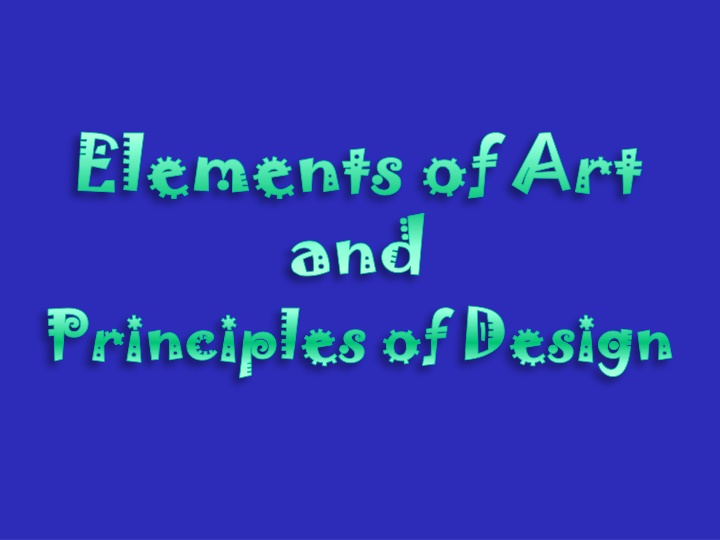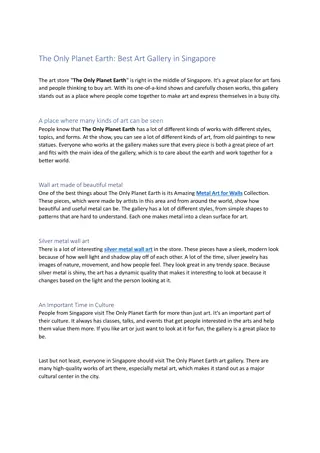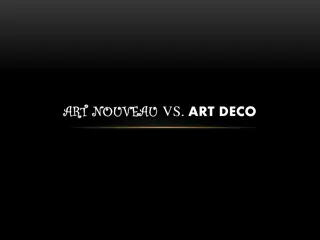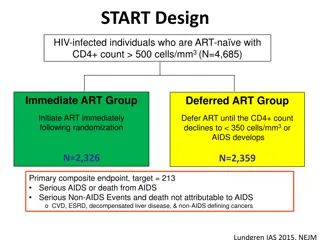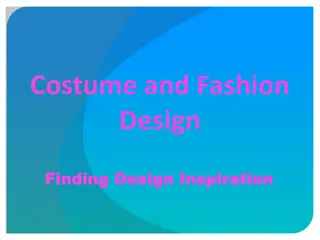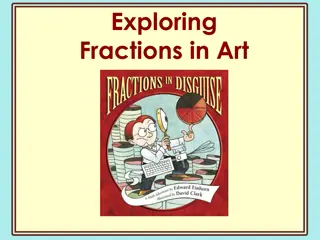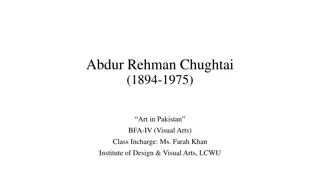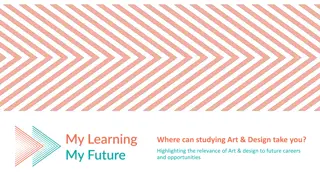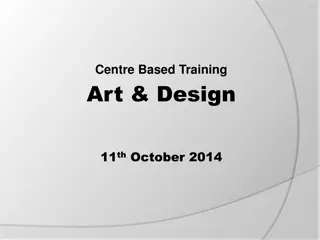Elements and Principles of Art in Design
Fundamental elements and principles of art and design, including line, shape, form, value, color, texture, space, and design principles like movement and balance. Learn how these elements and principles are used in creating visually appealing compositions.
Uploaded on Mar 05, 2025 | 1 Views
Download Presentation

Please find below an Image/Link to download the presentation.
The content on the website is provided AS IS for your information and personal use only. It may not be sold, licensed, or shared on other websites without obtaining consent from the author.If you encounter any issues during the download, it is possible that the publisher has removed the file from their server.
You are allowed to download the files provided on this website for personal or commercial use, subject to the condition that they are used lawfully. All files are the property of their respective owners.
The content on the website is provided AS IS for your information and personal use only. It may not be sold, licensed, or shared on other websites without obtaining consent from the author.
E N D
Presentation Transcript
Elements of Art Elements of Art Principles of Design Principles of Design
The path of a moving point at the edge of a flat shape, or outline of a solid object. It is longer than it is wider. Types of line refers to straight, curvy, horizontal, vertical, diagonal, zigzag, implied, and angular. Direction pertains to the movement that a line may have or seem to indicate. Location refers to the placement of a line.
Shape is a two-dimensional area made by connecting lines that establish the contour of an object. Shapes may be positive or negative, biomorphic or geometric. Shapes may stand out also by a difference of value, color, or texture.
The three dimensional projection of a shape, it has volume, dimension, appears to have mass. This element is frequently used in sculpture.
VALUE The appearance of lights and darks found in a work of art. These range from black to white with numerous shades of gray in between.
COLOR The Hue of an object created by the reflection of a wavelength of light on it s surface. Color creates moods, and affects emotions. Color schemes include: warm, cool, primary, secondary, intermediate, triadic, analogous, and complementary.
The roughness or smoothness of a surface. Texture can be real, tactile (sandpaper), or illusion (looks soft, but not).
Cube Square 3 SPACE 2 2 1 1 - Interval of measurable distance between pre-established points. - Two-dimensional space has height and width. - Three-dimensional space has height, width, depth, and volume.
Design principles Design principles are ways in which elements are used together. Movement Balance Emphasis Unity 10
Movement Movement is the use of lines, color, and repetition to create the illusion of motion. Curved forms or lines Repetition of geometric forms Fuzzy lines or outlines
Lines Lines can indicate motion or direction. How are lines used in the composition on this slide?
Balance Balance is the act of comparing or estimating two things, one against the other, and the contrast between: Empty space (white space) and filled space Text and images Color and no colors and different colors Textures against flat colors
Balance in composition There are three different types of balance when using color, shape, and position: Symmetry Asymmetry Radial symmetry
Symmetrical or formal balance You can usually identify at least one of three lines of symmetry. Horizontal Vertical Diagonal
Unity Unity: The correct balance of composition or color that produces a harmonious effect. What is the focus of the message?
Emphasis Emphasis: To express with particular stress or force. What message is stressed here?
